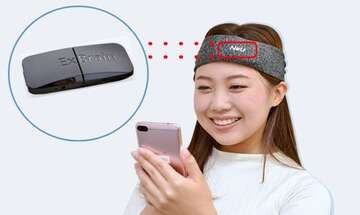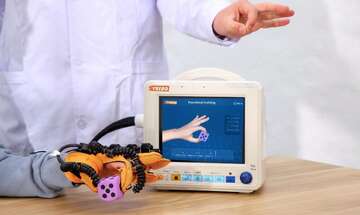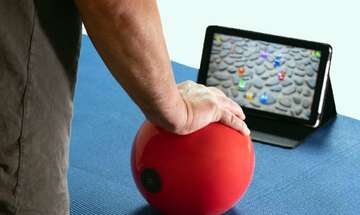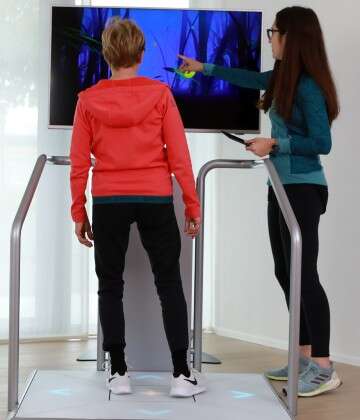Robotic Training with ArmeoPower Effective with Motor Impairment After Stroke
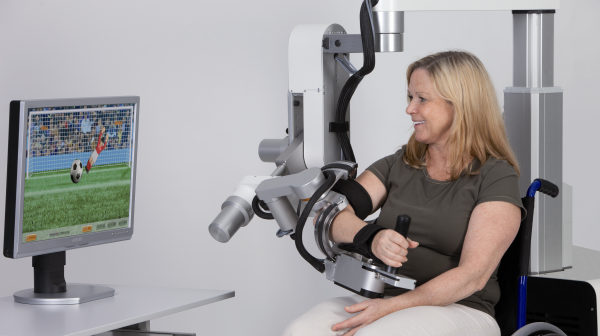 images: HOCOMA, SWITZERLAND
images: HOCOMA, SWITZERLAND Robotic training with Hocoma's ArmeoPower can reduce motor impairment faster and more effectively than traditional therapy for stroke patients, reveals a new study.
A new multicentre trial study has revealed that robotic training using the ArmeoPower rehabilitation device, designed by the Swiss medical device company Hocoma, helps reduce motor impairment faster and more effectively than traditional motor training after stroke. The study was led by Dr. Verena Klamroth-Marganska, Robert Riener, and other scientists at the Institute of Robotics and Intelligent Systems at ETH Zurich in Switzerland. The results of the trial study were published in The Lancet Neurology.
The ArmeoPower is the world's first commercially available exoskeleton designed for use in the early rehabilitation of patients suffering from hand and arm impairment, including stroke patients and individuals recovering from traumatic brain injuries and various neurological disorders. The device provides intelligent arm support within a large 3D workspace. It is based on the ARMin technology developed at ETH Zurich and University Hospital Balgrist.
The ArmeoPower delivers highly repetitive training for patients affected by severe motor impairment through a series of motivating exercises designed to help patients perform regular daily activities. The device offers Augmented Performance Feedback to motivate the patients to keep doing the exercises. The robotic arm exoskeleton automatically adapts to the patients' capabilities and provides support when needed.
The ArmeoPower also provides assessment tools that precisely record patients' performance and the amount of support they need during their training sessions. These tools track the motors and sensors integrated into the device to investigate specific functions, and the results can be used by trainers to document patients' progress and analyse their state.
The study team at ETH Zurich trained 77 chronic stroke patients suffering from moderate-to-severe arm paresis in 24 sessions over a period of eight weeks. Patients were randomly divided into two groups, with one group receiving robotic therapy using ArmeoPower and the other getting conventional therapy. Over the course of the study, patients trained for a minimum of 45 minutes three times a week.
After the trial period, the patients in the robotic therapy group showed a significantly greater improvement in motor function than those in the control group. Even though the most significant gains were documented in the first four weeks, the patients kept improving in the second half of the intervention period without a plateau at the end of therapy. The results of the study indicate that there is a possibility of further improvement of motor skills if the therapy was continued.
The study also revealed that the most severely affected patients were the ones who benefitted the most from therapy sessions with the robotic arm. This, according to the researchers, could have been a result of the higher intensity of training. However, the results took the scientists by surprise.
"The fact that especially severely impaired patients show improved rehabilitation outcomes with the ARMin is something we didn't expect and a completely new finding," said Dr. Klamroth-Marganska. "Now we have to look at the full potential of robotic arm therapy with larger follow-up studies and over a longer period."
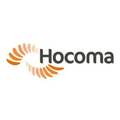
 SEND INQUIRY
SEND INQUIRY